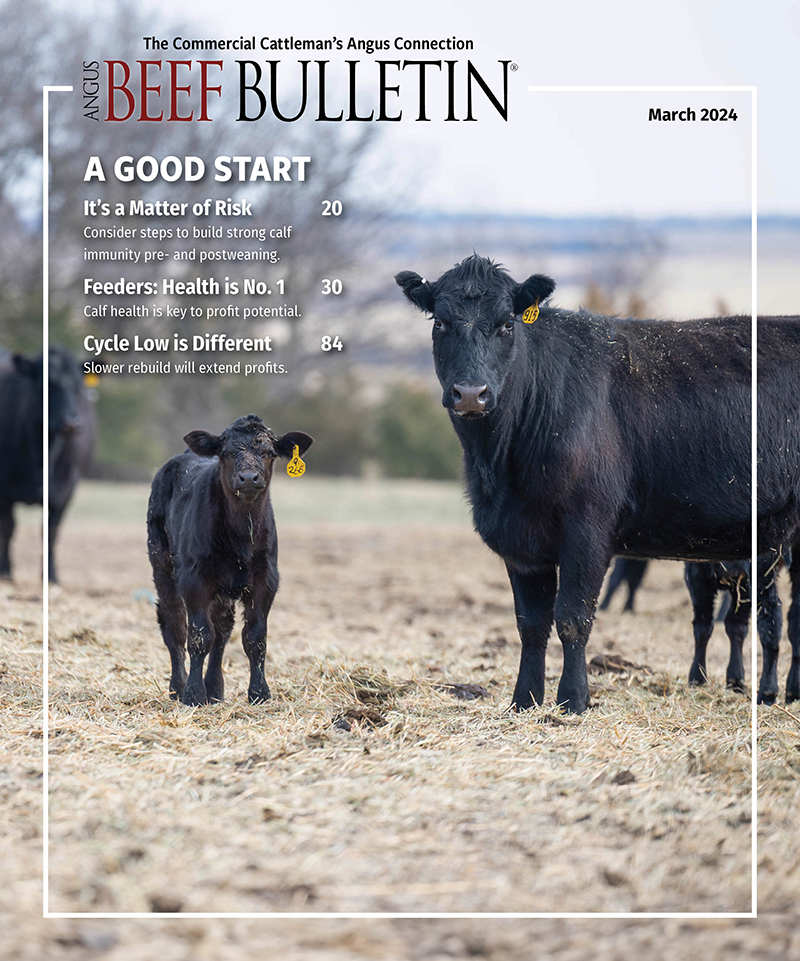
Keep Track of Withdrawal Times for Medications and Vaccines
Notching the tag is an easy way to track treatments on individual animals.
When an animal is given medication, a drug or vaccine, it takes a certain amount of time for the body to break it down and eliminate it. That animal should not enter the food chain until all residues are gone.
Different products have different withdrawal times before the animal can be slaughtered stated on the label, such as:
- 21 days for most modified-live virus BVD (bovine viral diarrhea), IBR (infectious bovine rhinotracheitis) or PI3 (parainfluenza-3 virus) vaccines;
- 28 days for an antibiotic like Baytril® or oxytetracycline;
- four days for intravenous injections of Banamine®;
- 48 days for a pour-on dewormer like ivermectin.
Almost all cattle receive routine vaccinations, so these must be given well ahead of sending them to slaughter. Throughout the year, there are always a few animals that get sick enough to need treatment. It helps to have a record system to keep track of withdrawal times for each animal.
Heidi Carroll, extension livestock stewardship associate at South Dakota State University says one method she has seen used in dairies that would also be useful in a beef herd is to notch the calf’s ear tag.
“This can be a visual reminder to look at your records to make sure there’s no withdrawal time that has not yet expired if you are selling weaned calves,” she says.
If marketing through an all-natural program, this can help you remember to cut that calf back when the calves are sold. It also serves as a treatment indicator to help with culling decisions regarding health history.
“It always helps to have some form of written documentation at your chute, or a notebook you carry if you are doctoring cattle in pastures. Make sure it gets written down in terms of animal identification, date, product and dosage,” Carroll advises.
It is important to note the product because some have different withdrawal times. All products, such as dewormers or delousing treatments need to have labels checked. The same applies to herbicides on pastures or pesticides on nearby crops, she says. If there is a grazing restriction, abide by those restrictions and maintain records. Otherwise, you could potentially have residues in those animals, which could be unfortunate if some of them are going to market, especially for grass-finished beef animals.
When giving antibiotics to a baby calf, some producers don’t think about withdrawal times, Carroll says. “Maybe they figure that this animal has many weeks or months before it ends up on someone’s plate, so they don’t have to worry about withdrawal times. But then they are not in the habit of writing down treatments. Recordkeeping, keeping track of treatment dates and withdrawal times, is part of our antibiotic stewardship.”
On occasion something unusual happens, and you decide to send an animal to market sooner than later. You need to know when that animal was last treated, she emphasizes. “Having records to verify which animals were treated and when — and whether they have all passed their withdrawal times — is important for food safety issues.”
Choice of antibiotic may hinge on withdrawal time. You might select one with a short withdrawal, thinking in terms of how soon that animal could be marketed. A visual reminder like a notched ear tag can also be important if you have employees.
“You might have one team doctoring and another team that loads and ships the animals. If nobody on the shipping crew knows that an animal was treated, this could be a problem,” Carroll points out. “If it has a different-colored tag or a notched tag, the shipping crew could see it and check records to make sure the animal is past the withdrawal time.”
On any operation with multiple team members, good records need to be paired with good communication and coordination, she says.
The same is true on smaller farms and ranches where one person keeps track of everything. If someone else has to do your chores or make decisions — because for some reason you are unable to — you need a record system you can refer them to, she suggests.
“Even in good situations, we don’t always remember everything and sometimes might get mixed up on a number,” Carroll concludes. “Good records are important, and having the records user-friendly and accessible is helpful.”
Editor’s note: Heather Smith Thomas is a freelance writer and cattlewoman from Salmon, Idaho. [Lead photo by Shauna Hermel.]



